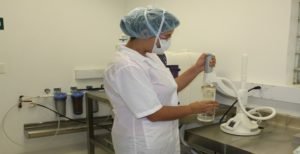Geospatial technology is a big deal, and it’s changing how we do a lot of things in our daily lives and different industries. It’s not just for science and business – it’s also helping with public policy.
One cool part of this tech is remote sensing. At first, it was all about studying pictures taken from airplanes. But now, thanks to better sensors and computer tech, we’re using satellites to get global pictures. These new sensors can gather data from all sorts of things that emit, send, or bounce back energy, like light or heat.
So, how does it work? Well, we put sensors on airplanes and satellites to grab the energy that bounces off or comes from our planet. This helps us understand what places are like without actually going there. There are two types of sensors for this job: passive and active.
Passive sensors look at the energy given off or reflected by stuff. Active sensors, on the other hand, send out energy, like a flashlight, and see what bounces back.
This kind of data is super useful in lots of areas, like studying populations, ancient places, city planning, water systems, checking on environmental rules, and even predicting crop harvests. We can even compare old satellite pictures with new ones to see changes and make smart choices. That’s why historical satellite images are important.
Pros of Remote Sensing:
- Helps in environmental monitoring and change analysis, such as tracking deforestation and pollution levels.
- Provides valuable real-time data for disaster response and management to assess damage and changes.
- Aids in agriculture by forecasting crop yields, resource management, and planning agricultural activities.
- Identifies geological features and mineral deposits, making it crucial for geological exploration and mining.
- Covers large areas and hard-to-reach places, enabling the observation of events over time.
- The data collected can be repurposed for various uses, such as construction site inspection and wildfire risk assessment.
- Offers various scales and resolutions for data collection, making it suitable for a wide range of applications.
- Provides multispectral imaging to identify specific features like vegetation and water quality, enhancing planning and management in different fields.
Cons of Remote Sensing:
- Can be relatively expensive, especially for analyzing small areas.
- The equipment used is costly and requires ongoing maintenance, leading to additional expenses.
- Atmospheric interference can affect the quality of captured images, making it challenging to obtain precise information.
- Specialized training is necessary to analyze remote-sensing images, which can be time-consuming and costly in the long term.
- Processing and analyzing the large volume of data obtained from satellites can be challenging and requires specialized software and expertise.
- Data from uncalibrated sensors may be unreliable, as calibration is essential for accurate measurement.
- Human errors are possible in choosing sensors, data resolution, calibration, platform selection, and timing of data collection, making careful considerations important.



